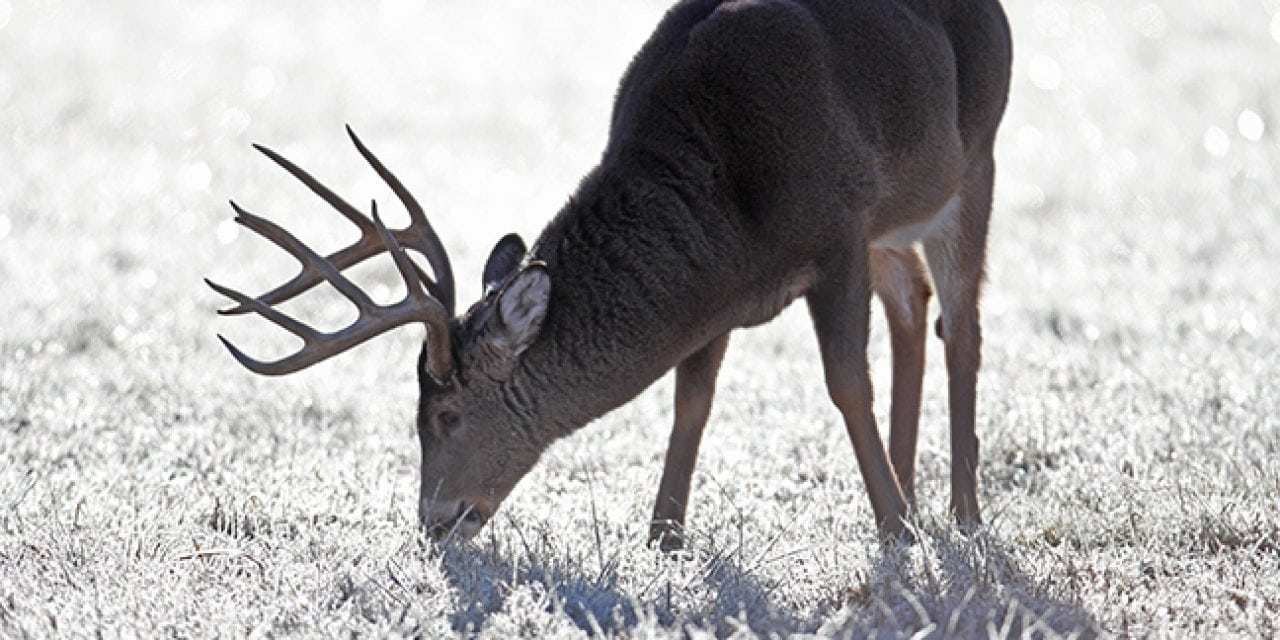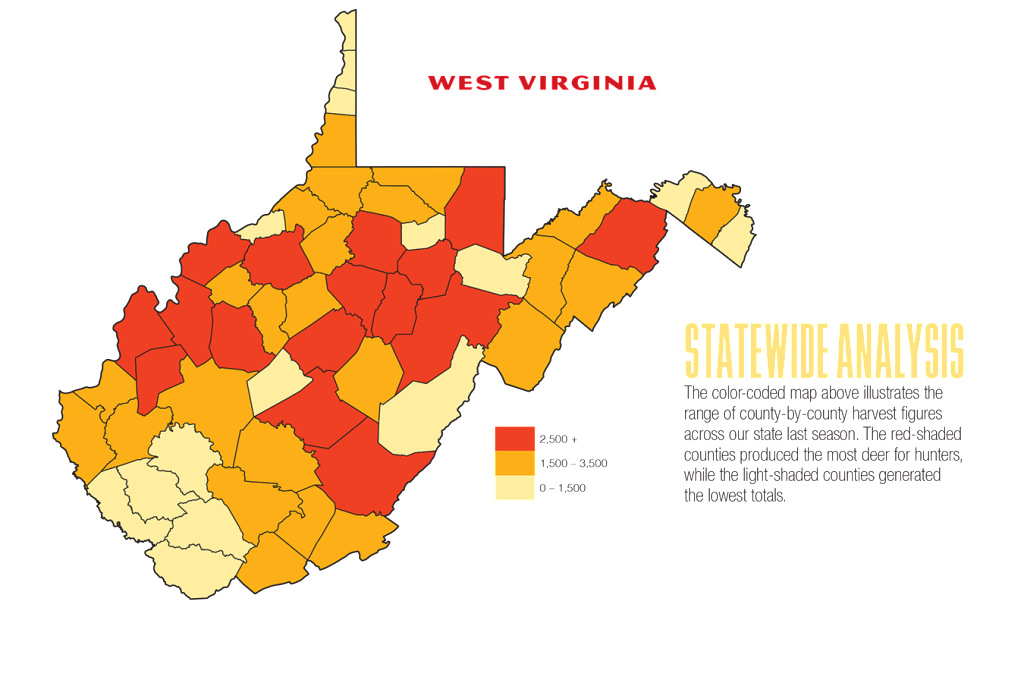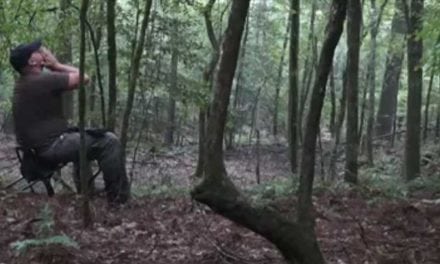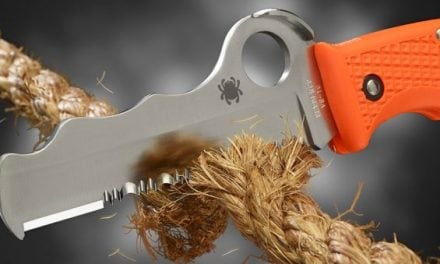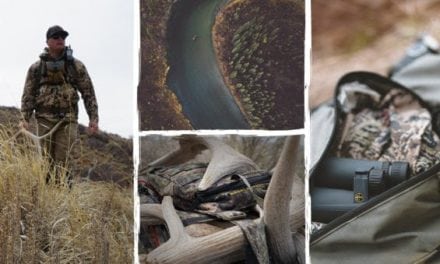
Photo By Ron Sinfelt
Today’s most-successful deer hunters have a strong knowledge of the total deer picture. This includes contemporary deer management and philosophies, such as buck-to-doe ratio, urban deer management, social acceptance, diseases and the intense attention the species receives from the West Virginia Division of Natural Resources.
While successful deer hunters must be adept at locating bedding areas, escape routes and food sources, and developing and maintaining good landowner relationships, the total deer hunter also understands the complete picture.
DEER MANAGEMENT PHILOSOPHIES
According to WVDNR Wildlife Biologist James Crum, one of the most important factors in deer management is evaluating the deer-to-habitat relationship — comparing deer numbers to available habitat to support those densities. Over the past 40 years, there have been declines in antler growth and the average weight of yearling bucks. The percentage of fawn breeding has dropped from 20 to 30 percent, to zero to 10 percent. Parasites have increased, and woodland plots protected behind fencing have indicated deer are over-browsing available habitat.
Dr. James Kroll and Pat Hogan discuss the impact of wind on deer behavior.
(Via North American Whitetail)
All this, says Crum, is indicative of a deer population that had grown beyond the carrying capacity of the land in many areas of the state. Because of this, the DNR has, over the past decade-plus, taken an aggressive approach in lowering deer numbers to be more in line with available food sources, as well as in better balance with the needs of human populations and industries (such as forestry and farming) that can be negatively affected by too large a deer herd.
Deer harvests peaked in the early 2000s. Last year’s total harvest (all combined seasons) of 112,384 antlered and antlerless deer was a 19 percent decrease from the prior year and 15 percent less than the previous five-year average.
Another aspect of deer management is trying to maintain (or develop) a better-balanced buck-to-doe ratio. This is attempted by adjusting bag limits of antlered and antlerless deer, which in West Virginia is done on a county basis. There can also be differences between private and public land regulations within county units. Last season, the antlerless deer maximum season bag limit remained at three, reduced from four in 2012, continuing a recent trend of reduced antlerless harvest. Not all counties are open to antlerless hunting. For instance, most national forest land had no antlerless season; six counties and portions of six other counties were open only to resident and non-resident hunters who had to apply for limited permits.
According to Crum, the harvest of antlerless deer is the key to healthier, heavier and more productive deer herds. To that end, the DNR aims to harvest a minimum of 70 females for every 100 bucks to stabilize the deer population. If a decrease in the herd is warranted, the percentage of harvested females needs to be above 40 percent. Crum’s harvest data shows the 2015 deer harvest of female deer to be 39 percent, which is expected to stabilize the statewide deer population. He notes, however, the percentage of harvested female deer in individual counties last season varied from 23 percent to 54 percent, which reflects antlerless deer season frameworks designed for individual counties to grow, reduce or stabilize the deer population on a county basis.
2017 DEER OUTLOOK
According to Crum, overall deer hunting opportunities in 2017 will be like those of the past season, except for increased antlerless season bag limits and more hunting opportunities in counties where recorded deer harvest data indicates the harvest should be increased to stabilize or decrease current deer populations.
“The substantial changes made in 2012, and continued through 2016, are proposed to remain in place for the 2017 season,” Crum said.
However, the White-tailed Deer Operational Plan is slated to undergo its five-year revision next year, so some changes may be on the horizon. Possible modifications include alternative efforts to monitor the deer herd through examination of harvested animals for the collection of biological information and tissue samples for disease testing, such as chronic wasting disease.
For instance, in West Virginia, hunters are directed to take harvested deer on certain days to specific locations to be examined by wildlife agency personnel. Similarly, last season, during the firearms season, successful hunters in Hardy and Hampshire counties (where the presence of CWD has been confirmed) were required to take deer harvested during the first two days of the season to designated areas for examination.
CHRONIC WASTING DISEASE
CWD is a reality in West Virginia, and a concern of all deer hunters and wildlife enthusiasts. Currently the “hotspot” is the eastern panhandle counties of Hardy and Hampshire. WVDNR personnel are working to monitor the disease, and limit its spread.
“Efforts by the DNR, landowners and hunters to control the spread of chronic wasting disease in free-ranging deer in Hampshire and Hardy counties are ongoing,” Crum said. “During the 2016 deer seasons, samples from 874 hunter-harvested deer brought to five DNR-staffed stations in Hampshire County and four in Hardy County were tested for CWD. Thirty-nine samples were found to have the abnormal protein associated with CWD.”
Crum stated that CWD has now been detected in a total of 231 deer in Hampshire County and four in Hardy.
“Lowering encounter rates between infected and non-infected animals by prohibiting artificial supplemental feeding and baiting are the generally accepted management practices for slowing the spread of such an infectious disease,” Crum said.
Presently, in all of Berkeley, Grant, Hampshire, Hardy, Jefferson, Mineral and Morgan counties, it is illegal to bait for deer at any time. In addition, hunters are prohibited from transporting dead deer or their parts beyond the boundary of Hampshire, Hardy and Morgan counties, except meat that has been boned out, quarters or other potions of meat with no part of the spinal column or head attached, cleaned hide with no head attached, clear skull plate with antlers attached, antlers with no meat or tissue attached and finished taxidermy mounts.
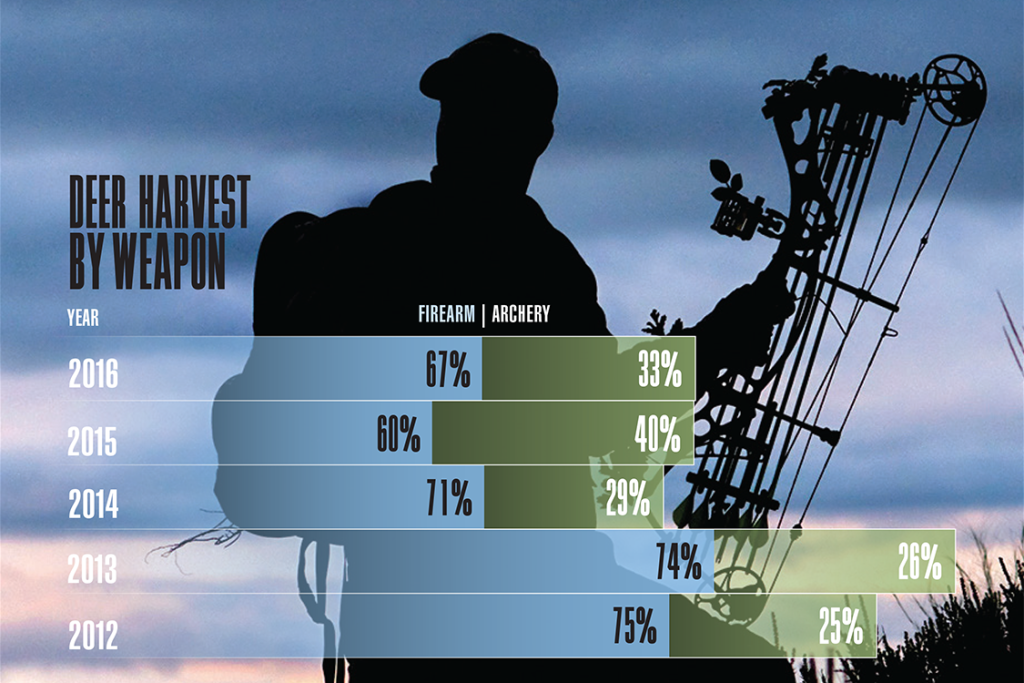
According to Crum, CWD infected deer have been confirmed in portions of the neighboring states of Virginia, Maryland and Pennsylvania. To reduce the risk of spreading CWD to new areas, other states have made it illegal to use deer scents/lures that contain natural deer urine or other bodily fluids. West Virginia hunters are urged to use caution in spreading natural deer-urine-based lures in the environment, and are asked not to place deer urine lures on the ground or on vegetation where deer can reach them.
Additional information on CWD and the status of the disease in West Virginia can be found on the WVDNR website at www.wvdnr.gov or by contacting any of the agency’s offices.
NON-SEASONAL MORTALITY
Since hunting is the primary tool used in deer management, it’s understandable to think that nearly all deer mortality is hunting related. However, this is not the case. Vehicle collisions and deer taken to reduce crop damage also make a significant contribution, though less of one as deer numbers stabilize.
Last year, non-seasonal mortality accounted for 15,106 deer, a decrease of eight percent from the prior year. Crop damage permit deer harvest was 1,882, down 20 percent; road kills (reported by the state Division of Highways) totaled 13,224 last year, down about 5 percent.
Crum notes that deer management is a constantly changing process, one that addresses the aforementioned issues and concerns. Deer hunters are a big part of the picture, particularly well-informed hunters.
The post 2017 West Virginia Deer Forecast appeared first on Game & Fish.


